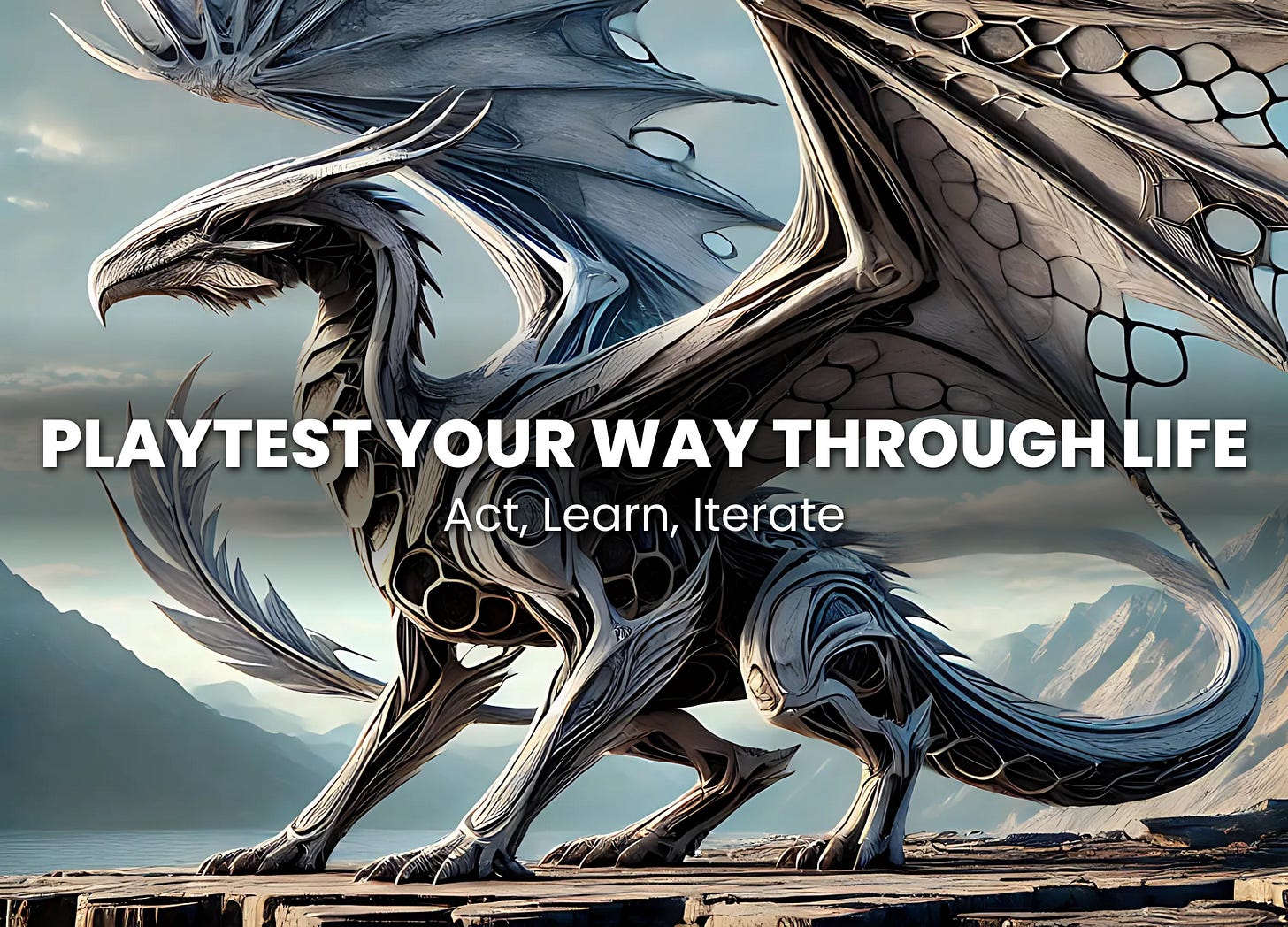The article below stands on its own, but if you’re new to this Substack or to game design, you might enjoy it more by starting with the article I’ve linked here.
Learning through Action
What’s the difference between an unemployed couch potato and an unpublished game designer?
Except for mindset, not much.
When I left my dream job making games for properties like World of Warcraft and Marvel to strike out on my own, everyone thought I was nuts. I didn’t have a plan—just a year’s worth of savings, a head full of ideas, and a gnawing desire to create something of my own.
I looked for inspiration reading books, taking notes, and breaking down the mechanics of my favorite games. But eventually, I hit the wall every designer faces. Books can give you tools, but not experience. The only way to truly learn is to do the thing, screw it up, adjust, and try again.
So I started prototyping.
Every day, I tinkered with game ideas and every evening, I tested them with friends and locals at the game store. I filled notebooks with rough sketches and notes on what worked—and what didn’t. I pitched to anyone who would listen. I asked for feedback like my life depended on it. In some ways, it did.
Eventually, that persistence led to an opportunity: a freelance gig designing a toy-based game for a cartoon called Hero 108. I showed up early, over-caffeinated, and buzzing with enough nervous energy to power the LA grid. I gave it everything I had. A few days later, they emailed me asking for a quote.
Awesome! Now all I had to do was figure what the hell a “quote” was.
So I Googled it and got to work, fumbling my way through a spreadsheet until I had something that looked reasonable enough. I sent it off, got laughed at, and was given the job immediately. I realized I had grossly underpriced myself. The next time, I doubled my rate and got hired again. I doubled it once more and still got a yes. It wasn’t until I finally heard hesitation on the other end of the phone after the fourth double that I knew I’d reached the market rate for my work.
I knew about the principles of iteration, and I knew how to calculate revenue and hourly rates, but I didn’t learn how to apply those lessons to business until I was faced with real situations and the emotional struggle of asking to be paid for my work.
Looking back, I realized none of my early wins came from having the right answers. They came from movement: imperfect, uncomfortable, often awkward. Over time, those small experiments became the foundation of a creative career, not because of what I had read, but because of what I had done, and kept doing.
What Game Designers (and All Creators) Can Take Away
Action creates feedback. Feedback creates learning.
Theory is useful. But doing the thing (even badly) is how you level up.
Every test is a step toward mastery.
Your first prototype, your first quote, your first pitch: they won’t be perfect (often they will be terrible), but each one teaches you lessons and earns you experience.
Embrace iteration (on your ideas and yourself.)
Just like a game mechanic improves through playtesting, so does your pricing, your confidence, and your ability to communicate value.
Make winning easy at first.
Break big goals into small, winnable steps. Celebrate each one. These small wins help keep you motivated as you learn tough lessons through iteration.
Build your C.O.R.E. traits.
Curiosity fuels exploration.
Obsession keeps you in the game.
Resilience gets you through losses.
Empathy connects you to your players and teammates.
Play at the edge of your ability.
Stay out of your comfort zone—but don’t jump into boss fights under-leveled. The best games balance challenge and reward appropriately.
This Isn’t Just Game Design—It’s Life Design
Whatever you’re building, whatever you’re chasing, remember this: you don’t need permission to start. You don’t need to have all the answers before you begin. You just need to take the first step.
If you have a dream and want to achieve it, start prototyping.
Pay attention to the feedback the world gives you. Then tweak your design, rethink your rules, adjust your price, and try again. That’s how games improve, and it’s how creatives grow. In the end, the difference between dreaming and designing isn’t talent or timing—it’s motion.
So carry this with you as a mantra: Act. Learn. Iterate.
Because that’s not just how games are made.
It’s how we craft a life worth living.
Before you click away…
I’ve got something new in the works and I’d love it if you’d take a look!







